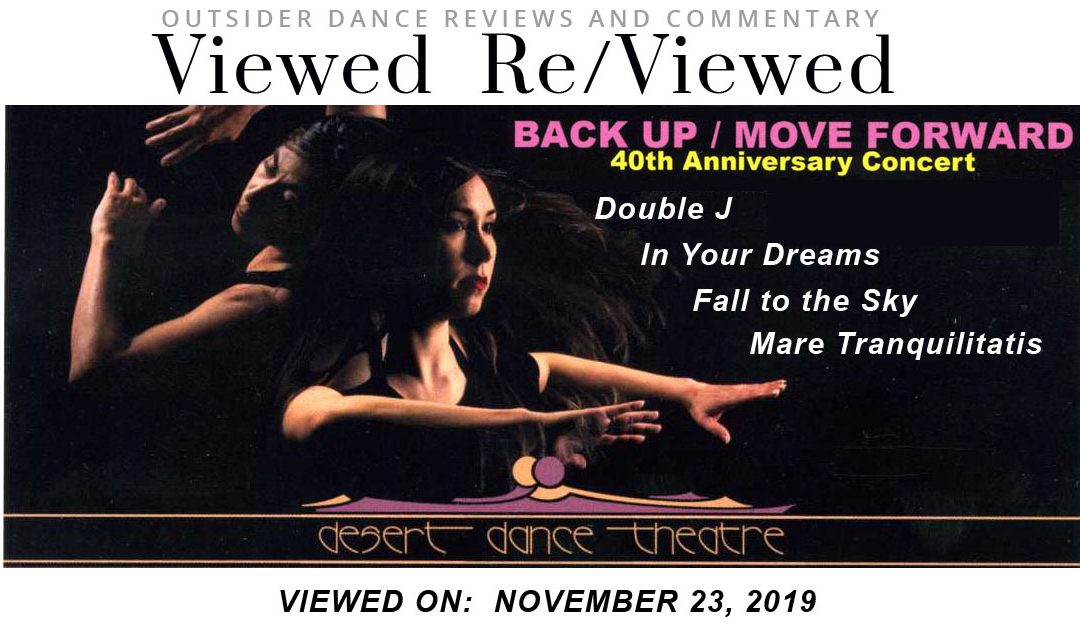Company: Desert Dance Theatre
Choreographer: Candy Jimenez
Performers: Erik Canales, Jeremiah Jenkins, Derrick Patten
Mare Tranquilitatis is an abstract dance piece and, as such, difficult to review because, well, it’s abstract. There isn’t a story line or sentiment or interpersonal relationship you can discuss. Don’t get me wrong, abstract works are an essential part of dance. I welcome and enjoy the best of them – they are simply difficult to discuss. Like an abstract painting – you can refer to color or line or the relationship of shapes and composition, but beyond that it is difficult to talk about. It’s a one-way conversation – a purely visual experience and any impressions it imparts are bound to be highly personal.
That being said, the visuals in this piece were quite interesting. Choreographer, Candy Jimenez’ decision to compose the piece with three male dancers is somewhat unusual all by itself. In retrospect, it seems like the perfect number. Two would have been a duet and unavoidably interpersonal. Four would have been something of an ensemble and more depersonalized. The trio occupied a space in between where the interactions were less predictable and kept myself and the rest of the audience intrigued.
There should also be a shout-out here to the costume designer (uncredited) for a significant contribution to the visual presentation. The long, open shifts enhanced the impression of height and unified the look of the dancers. They were intriguing and in conjunction with the use of smoke on stage gave the performance an immediate air of mystery.
The soundtrack was dreamy and quietly percussive, lending itself to long, graceful phrases from the dancers as the trio alternately arched together, giving us a momentary sense of unity, and then fell apart into its individual elements. Much of the floor work was synchronized but there was enough independent movement to keep the audience from perceiving this as purely an ensemble work. It was its own thing, with simple elements that still felt visually rich.
A change in the soundtrack seemed to signal a second movement, but the mood and overall style seemed to persist. Because the piece ended rather quickly after that, I wasn’t sure that it was finished when it ended. Since it was billed as a premiere, I wonder if this is a work in progress that might be expanded in some future presentation. It certainly has that potential. My hope would be that the choreographer might find music and movement that would create some distinct stylistic differences to reignite our interest and further challenge our imagination. This piece was very watchable and I believe that in the future it could be even more so.
Viewed Re/Viewed


Recent Comments